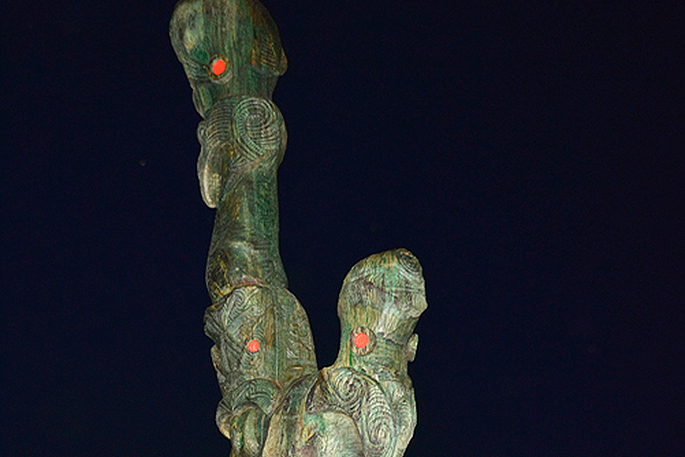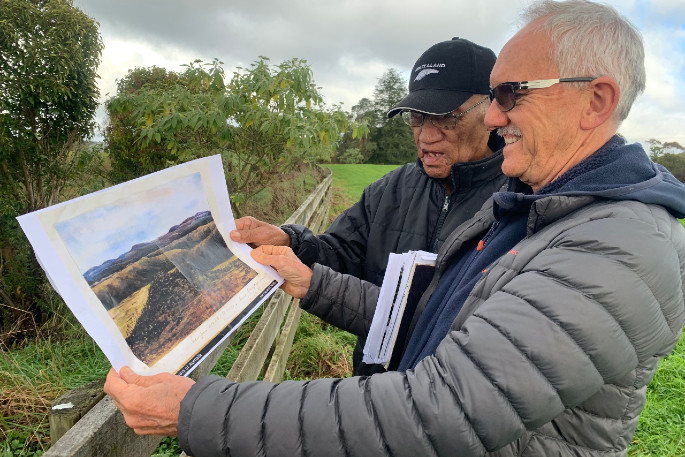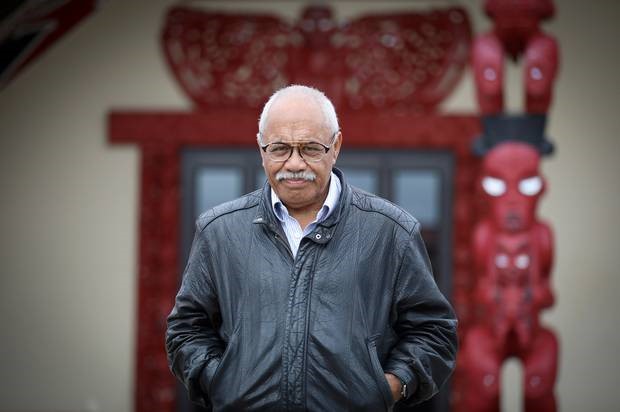A talk this afternoon about the new developments taking place at two Tauranga battle sites is sparking high interest amongst those who want to see local history become more widely known.
In June 2021, Tauranga City Council announced the injection of funds into projects that seek to develop cultural and heritage centres, each designed to enable the local community to engage with the stories of Tauranga Moana and connect with taonga that tell the rich cultural history of our city.
Ngai Tamarawaho, in partnership with the Pukehinahina Charitable Trust, received $125,000 funding towards the establishment of a cultural centre at Gate Pā/Pukehinahina reserve which will focus on the New Zealand Land Wars.
In recent years there has been a steady growth amongst Tauranga residents interested in the history of the city – the story of Pukehinahina or Gate Pā in particular which was fought on April 29, 1864. That story also received a major boost with the series of events organised around the 2014 150th commemoration of the Battle of Pukehinahina.
.jpg)
Matewai Karaka of Waitaha at the Battle of Te Ranga memorial which sits over the trench site. Photo: Cameron Scott.
The Battle of Te Ranga took place on June 21, 1864, and is commemorated each year at the site in Pyes Pā. This little known battle from Tauranga's history has probably done more to shape the destiny of this city than any other engagement of the New Zealand Wars.
Following the battles, the little-known Tauranga Bush Campaign was a six-month-long armed conflict in the Bay of Plenty resulting from the surveying of land that was confiscated from Tauranga Maori after the Battles of Gate Pā and Te Ranga in 1864. It was part of the New Zealand Wars that were fought over issues of land ownership and sovereignty. Some Maori responded to the surveying by interfering with the process, and with threatening the surveyors. The government responded in 1867 by sending in troops to burn villages and destroy crops.
The Waitangi Tribunal regards the response as unjustifiable.
"The actions of Crown forces in burning villages and destroying cultivations were excessive in relation to the declared aim of the campaign, which was to apprehend individuals who had interfered with surveys and threatened surveyors working on the confiscated blocks."

The Pou at Pyes Pa commemorates the Tauranga Bush Campaign - Te Weranga ki Taumata. Photo: Colin Lunt.
In 2017, 150 years following the Tauranga Bush Campaign, pou carved by Damian Kohu were erected at sites around the outskirts of Tauranga, such as Whakāmarama and Te Ranga. The pou stand about five metres high, and while little is known about the bush war now, it is hugely significant for local Māori.
The commemorations at each of the two main battle sites often includes the singing of the hymn ‘Whakaaria Mai' and ‘Abide with Me' which was also the hymn sung by British officers with Rev. Brown at the Mission House the night before the Battle of Gate Pā.
The commemorations provide for reflection, and have had an air of deeper reconciliation in spite of the fact there has been much hurt and anger arising from the tragic events at Te Ranga.
At the 2020 Te Ranga commemoration, Western Bay Council mayor Garry Webber spoke about the site, which is presently a large paddock, being a regionally significant commemorative place in the history of the district.
'I know the trust that looks after the property has plans for improving it,” says Webber. 'I think that's appropriate given its history to our region. We should make this site as prestigious as we can but make sure it's simple and elegant while reflecting the magnitude of the event that took place.”
.jpg)
The 2020 Te Ranga commemoration. Photo: Cameron Scott.
The battle that occurred at Te Ranga has been described as among the bloodiest of the New Zealand campaigns. In desperate hand-to-hand fighting, British troops exacted terrible vengeance for Gate Pā.
The Maori garrison was unable to hold the incomplete defences and slowly withdrew. When Puhirake, the hero of Gate Pā himself was killed, the retreat became a rout. British cavalry gave chase, but could not penetrate the nearby bush.
More than 100 Maori, including the chivalrous Henare Taratoa, were killed or mortally wounded at Te Ranga, as were 13 British troops. The visiting iwi also suffered heavy casualties, which contributed to their subsequent enthusiasm for the Pai Marire insurgency.
Twenty-seven severely wounded Maori were taken to hospital at Te Papa camp. Fourteen did not long survive the battle and were buried at Mission Cemetery. Among the mortally wounded was Te Tera of Ngai Te Rangi, the only one to be identified in official reports.
About 70 Maori defenders including Puhirake were buried in the trenches at Te Ranga, which is now the large grass paddock.
'It's like the Elms cemetery - incredibly sacred land,” says Webber. 'I think it's right to lift the profile of Te Ranga, in keeping with its original character. It was a battle field.”
.jpg)
Students from Aquinas College laying a wreath at the Te Ranga battle site. Photo: Fiona Sullivan.
Funding has been allocated this year from Tauranga City Council towards those improvements.
While some restorative work was done on the Pukehinahina site and its accompanying site at Te Ranga these were ‘introductory' in nature and plans are now afoot to build on this preparatory work and bring these two sites right up to ‘must-see' visitor status.
During a recent ground penetrating radar survey at the Te Ranga site, a trench was identified that extends along the southern end of the site. Now filled in, it is believed to have once extended across the valley. The memorial sits directly over the trench.

Tamati Tata from Ngāi Tamarāwaho and Clinton Bowyer, landscape architect at Tauranga City Council look at a painting of the 1864 battle site. Photo: Rosalie Liddle Crawford.
Buddy Mikaere as project director for the Pukehinahina Charitable Trust has been intimately involved with both the Pukehinahina and Te Ranga site upgrades.
Buddy says the plan at Te Ranga may involve a replacement for the memorial as well as a structure built to house information about what happened there in June 1864.
'There will also be some landscaping work,” says Buddy, 'but the major part of the work here will be the clearing and replanting of the very steep scarp that's on the eastern side of the reserve.”
All of the noxious weeds down the hill will be taken out and replaced with planting.
'The idea is to try and recreate the native bush that once upon a time was here, and to create a recreational space that people can come and walk through.”
The project may take up to two years to complete and will include removing the hedge on the Pyes Pā side of the site, with a bund formed to mute traffic noise that travels across the ground.
Buddy's talk at 2pm on Sunday October 3 at the Tauranga Historical Society meetings at Brain Watkins House in Cameron Road is designed to bring the community right up to date with what is proposed and where the projects are at.
"Tauranga has a great history that we need to celebrate," says Buddy,
Tauranga Historical Society talks are held monthly and are open to all. The $2 door charge includes afternoon tea and a chance to network with others that share the same passion for history.
Tauranga Historical Society monthly meeting, 2pm – 3.30pm Sunday October 3 at Brain Watkins House, Cameron Road, Tauranga. Guest speaker Buddy Mikaere. $2 door charge. All welcome.



0 comments
Leave a Comment
You must be logged in to make a comment.